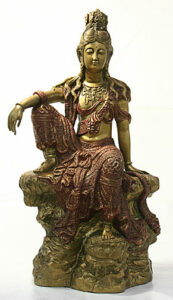Transcutaneous auricular vagal nerve stimulation (taVNS) might be a mechanism behind the analgesic effects of auricular acupuncture
Kristen Sparrow • October 01, 2017


This is a retrospective study that explores the most commonly used ear acupuncture points and concludes that vagal nerve stimulation may be the mechanism of pain reduction. I met the first author at a conference in Barcelona 3 years ago. Hopefully, he’ll remember me and send me a reprint.
As blog readers and patients know, I’ve been using taVNS in the clinic in conjunction with acupuncture and measuring autonomic response. In some people, it is very effective in lowering sympathetic activity and increasing vagal activity. (Update: I was able to get a copy of the article. It is here. Usichenko et al. Brain Stimul 2017 It’s a lot to go through. I will update once I’ve done that!
Transcutaneous auricular vagal nerve stimulation (taVNS) might be a mechanism behind the analgesic effects of auricular acupuncture.
Author information
- 1
- Department of Anesthesiology, University Medicine of Greifswald, Germany; Department of Anesthesia, McMaster University, Hamilton, Canada. Electronic address: taras@uni-greifswald.de.
- 2
- Department of Anesthesiology, University Medicine of Greifswald, Germany.
- 3
- Functional Imaging Unit, Diagnostic Radiology, University Medicine Greifswald, Germany.
Abstract
BACKGROUND:
Randomized clinical trials (RCT) demonstrated that auricular acupuncture (AA) is effective in treatment of acute and chronic pain, although the mechanisms behind AA are not elucidated.
METHODS:
The data concerning the localization of AA points, which are commonly used to treat pain, were extracted from the meta-analysis of 17 RCTs and evaluated using the anatomical map of auricular afferent nerve supply.
RESULTS:
Fifteen out of 20 specific AA points, used in the treatment of pain, are situated in areas innervated mostly by the auricular branch of the vagal nerve (ABVN), whereas sham stimulation was applied at the helix of the auricle, innervated by cervical nerves.
CONCLUSION:
Considering the clinical data relating to the anatomy of neural pathways and experimental findings of the mechanisms of transcutaneous auricular vagal nerve stimulation, the analgesic effects of AA may be explained by stimulation of ABVN.

